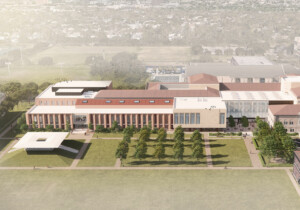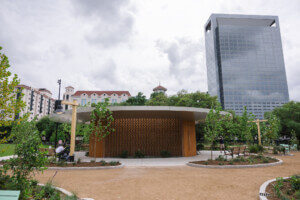In Texas, just beyond Fort Worth’s city center lies a 450-acre site called Panther Island. The landmass is surrounded by Panther Lake and Trinity River. It’s home to a few light industry buildings, a sea of parking lots, and La Grave Field, a derelict baseball stadium.
Lake|Flato Architects and HR&A Advisors recently released their master plan to transform Panther Island into a thriving mixed-use neighborhood. The development, according to the architects, represents the “largest, most consequential re-development opportunity near a major American downtown in the entire country.”
The master plan stands to deliver a stunning riverwalk network akin to San Antonio that the Panther City can be proud of. “I lived in San Antonio for four years, I can’t wait to stick it to them and their riverwalk,” Fort Worth City Council Member Gyna Bivens, who represents east Fort Worth, told local reporters.
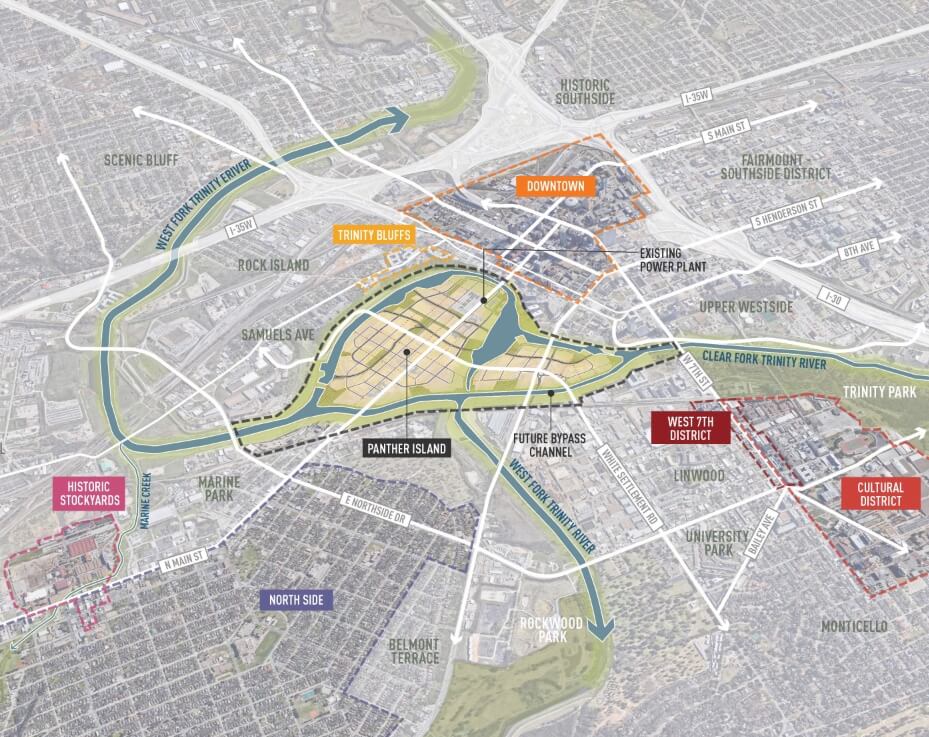
Here, one may ask: Why is Fort Worth’s appellation the “Panther City”? And why does it have a Panther Island and a Panther Lake too?
In his 1929 book A Ranger of Commerce, Howard A. Peak noted that Fort Worth was once so calm and serene, a panther laid down on one of its main roads, Weatherford Road (now Weatherford Street). Afterward, Fort Worth was dubbed the Panther City for its humdrum demeanor.
Laying into Fort Worth lore, city officials voted to rename the 450-acre site (once called Trinity North) “Panther Island” in 2013. The master plan seeks to flip Panther Island into a vibrant, mixed-use waterfront district that could become an economic driver for Fort Worth’s rapid growth. The architects hope that the project becomes a model for sustainable development and adaptive reuse. A survey of existing conditions presented a number of existing buildings ripe for new development, among these the baseball stadium, a power plant, and drive-in theater.
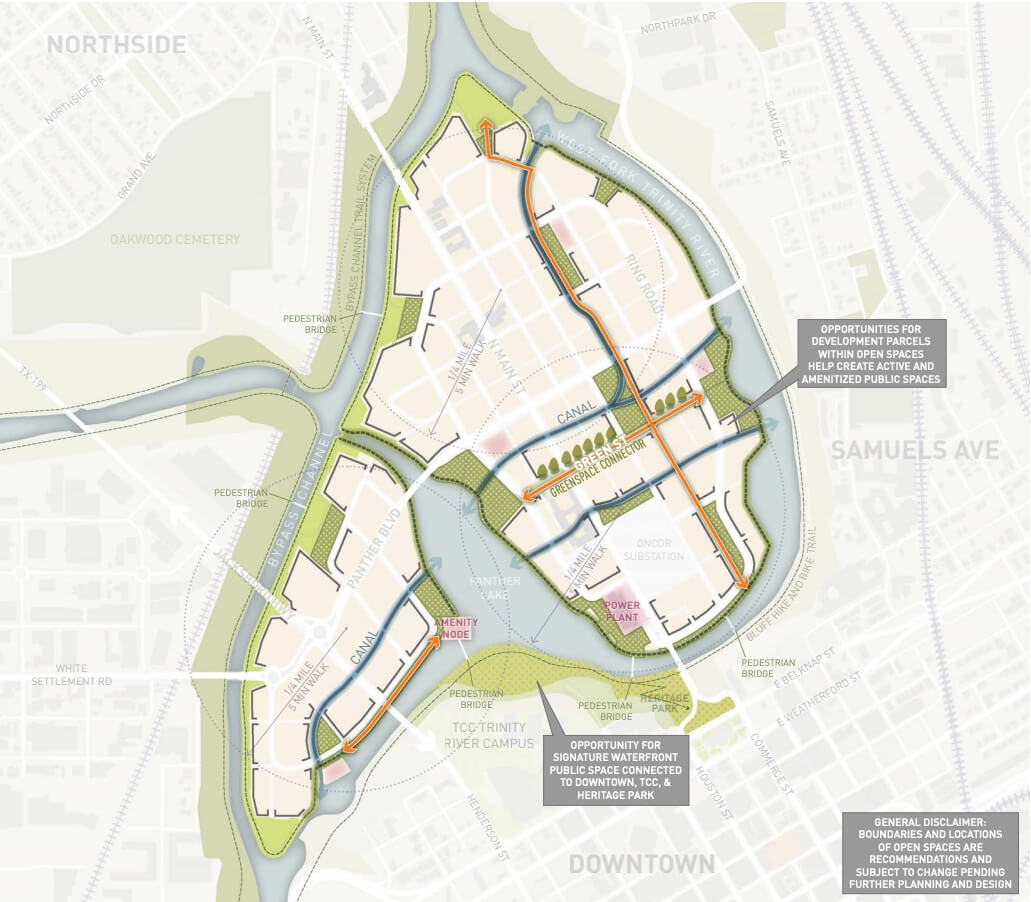
Today, 75 percent of land on Panther Island is owned by public entities. This presents an exciting opportunity for the project’s overall vision to be crafted by public stakeholders with select private development influence, the design team continued.
Plans to redevelop Panther Island date back to the 2004. That year, the Fort Worth City Council approved a 20-year plan to transform the island. Afterward, the Army Corps of Engineers released funds to build a bypass channel that lifts the district out of the flood plain.
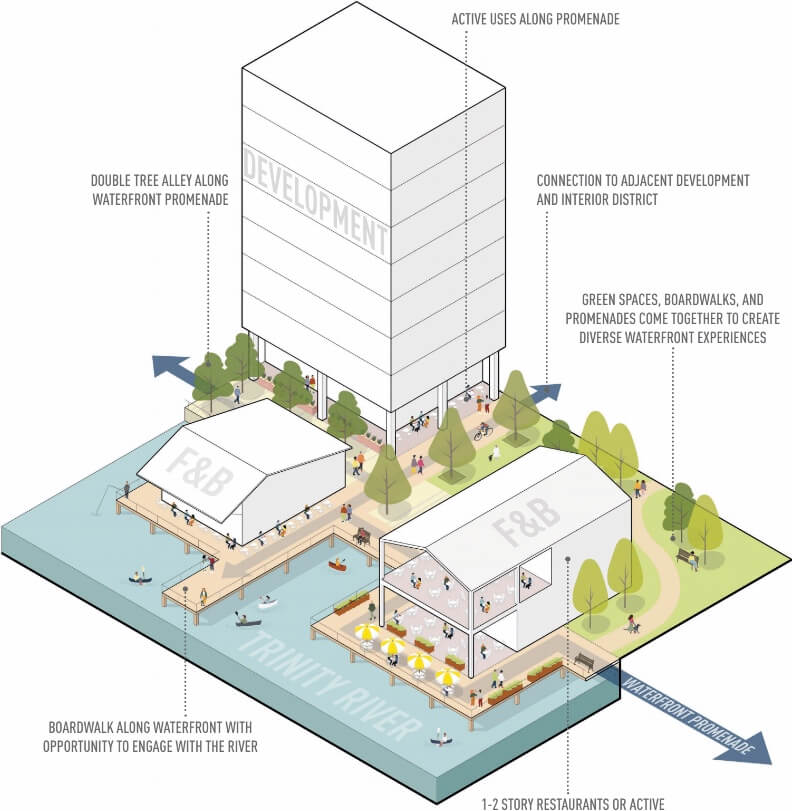
Upon completion, Panther Island will contain publicly accessible waterfronts, parks, and urban green spaces coalescing alongside pedestrian-scaled, walkable urban blocks. There will also be boardwalks, green streets, pedestrian pathways, and promenades; and access to mobility, transit, and connections to nearby neighborhoods. The island’s overall aim is to create a 15-minute city where residents and visitors can live, work, dine, and play.
“Right now, it’s a place people drive through, and there’s few reasons to stop and engage in the place,” said Cary Hirschstein, managing partner at HR&A. “But it is surrounded by this incredible wealth of community and culture, and this offers the opportunity really to knit all of that together.”
Construction at Panther Island is anticipated for completion in 2032.









